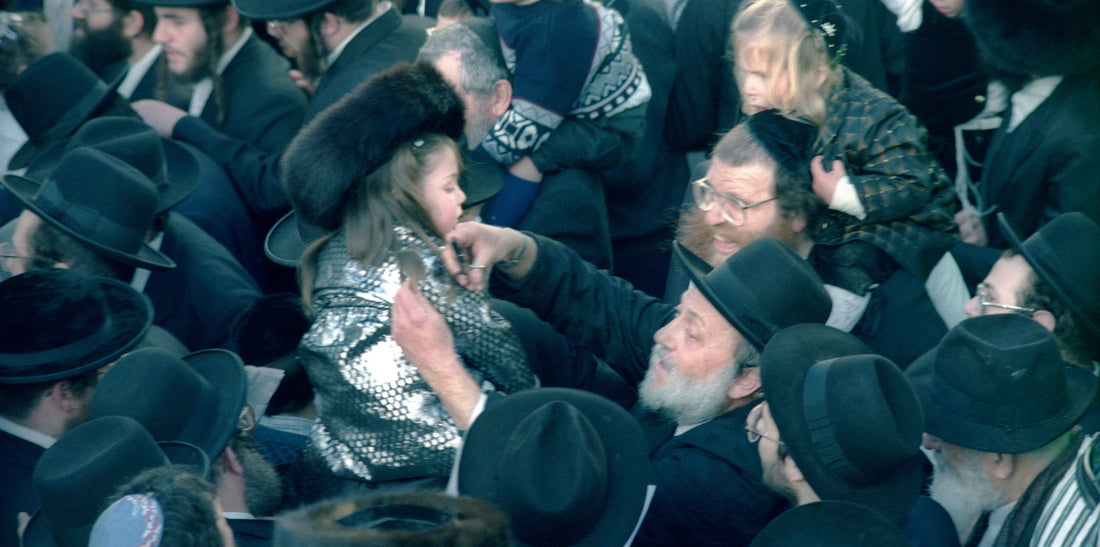
Upsherin: The first haircut
In Judaism, the upsherin, the first haircut, is a particularly significant ritual that marks a Jewish boy's transition from childhood to religious maturity. This ritual, in which boys' hair is cut for the first time at the age of three, has both spiritual and cultural significance.
What is Upsherin?
Upsherin typically takes place at the age of three: in Jewish tradition, children of this age are considered old enough to understand and follow religious duties and rules—in an age-appropriate manner, of course. The symbolic act of cutting the child's hair not only celebrates the child's growth but also marks the beginning of Torah study. In many communities, the boy is given a kippah and tallit in a solemn ceremony for this occasion.
Cutting the hair during Upsherin has both spiritual and cultural significance. It symbolizes the transition from infancy to a new phase in life, in which the child assumes greater responsibility for their religious and social obligations.
In many Jewish families, therefore, the hair of young children is not cut during the first years of their lives to preserve their innocence and purity. With the Upsherin, this state of innocence is shed, and the child enters a new phase of life in which they are increasingly entrusted with religious tasks, such as learning prayers and keeping the commandments. Cutting the hair is often understood as an act of renewal and growth, both on a physical and spiritual level.

The ritual as a family celebration
Upsherin is not only a religious act, but also a socially and culturally An important celebration. Family and friends gather to celebrate the boy and honor this special transition. The ceremony is often held in a festive setting, with music, prayers, and dancing.
The cutting of the hair is often performed by the father or another important male relative. This emphasizes the importance of family cohesion and the passing on of traditions in everyday Jewish life. In some communities, the hair is braided beforehand; sometimes parents even keep a lock of their child's hair as a memento of this special day.
Upsherin and Jewish legislation (Halacha)
The ritual of upsherin is closely related to the religious precepts of Jewish Halacha (Jewish law). In general, Judaism prescribes that haircutting should not be done arbitrarily, but rather in accordance with religious commandments.
One of the most well-known regulations is the prohibition against shaving the corners of the beard, as stated in the Torah in the book of Leviticus: "You shall not cut the hair at the temples of your head, nor shall you shave the edges of your beard" (Leviticus 19:27). This commandment is understood by most Jewish communities to indicate that shaving or trimming hair on certain parts of the face, especially the beard, is forbidden.
For religious Jews, especially those who strictly observe the laws of the Torah, shaving or trimming one's beard has a deeper meaning: the preservation of one's religious identity and, with it, the obligation to adhere to the commandments. The decision to groom one's beard rather than shave it is therefore also a form of respect for the Torah and its precepts.

Symbol of purification and renewal
In Judaism, shaving one's hair also has the broader symbolic significance of purification and renewal. This is especially evident in ritual moments such as teshuva (repentance) or in certain preparations for religious holidays such as Yom Kippur. In Jewish tradition, cutting off hair, the symbolic severing of "old" aspects of the self, is often believed to represent a form of spiritual renewal.
In traditional Jewish communities, there is a custom of cutting or trimming hair only at certain times of the year to purify oneself spiritually and free oneself from negative influences. This involves not only external change, but also a deeper inner transformation that is said to lead to a better connection with the divine.
Conclusion
There are deeply rooted traditions surrounding haircutting in Judaism that have both spiritual and cultural significance. The ritual of Upsherin marks an important transition in the life of a Jewish child, from childhood to religious maturity. It symbolizes the child's growth and the beginning of their journey into the religious and spiritual realms.
Other rituals surrounding haircutting have a deeper meaning, according to the Torah and the commandments of Halacha: It is an act of spiritual purification that strengthens both the faith and the cultural identity of the Jewish community. The ritual and its associated customs offer believers an opportunity for renewal and to strengthen their connection to God.

